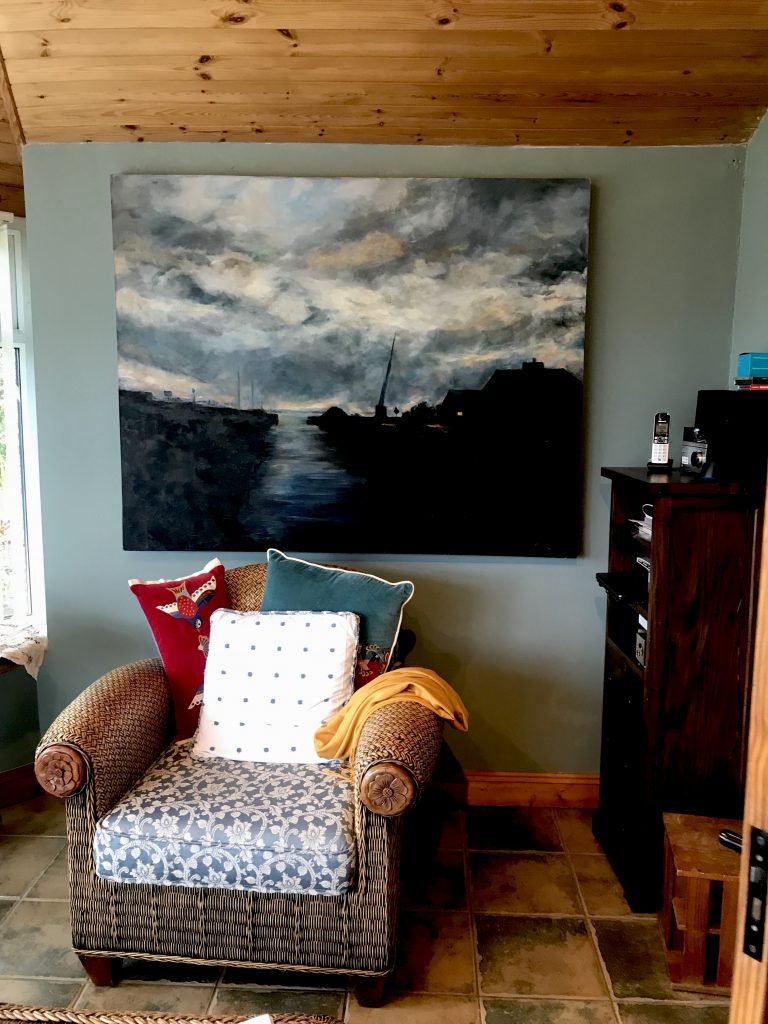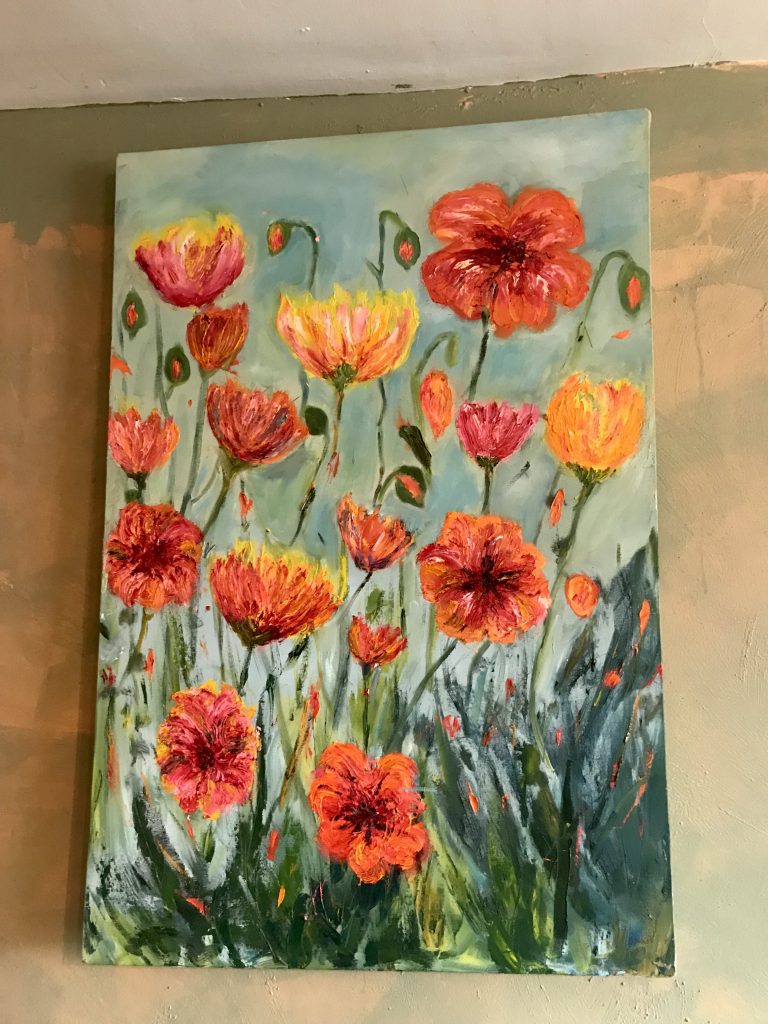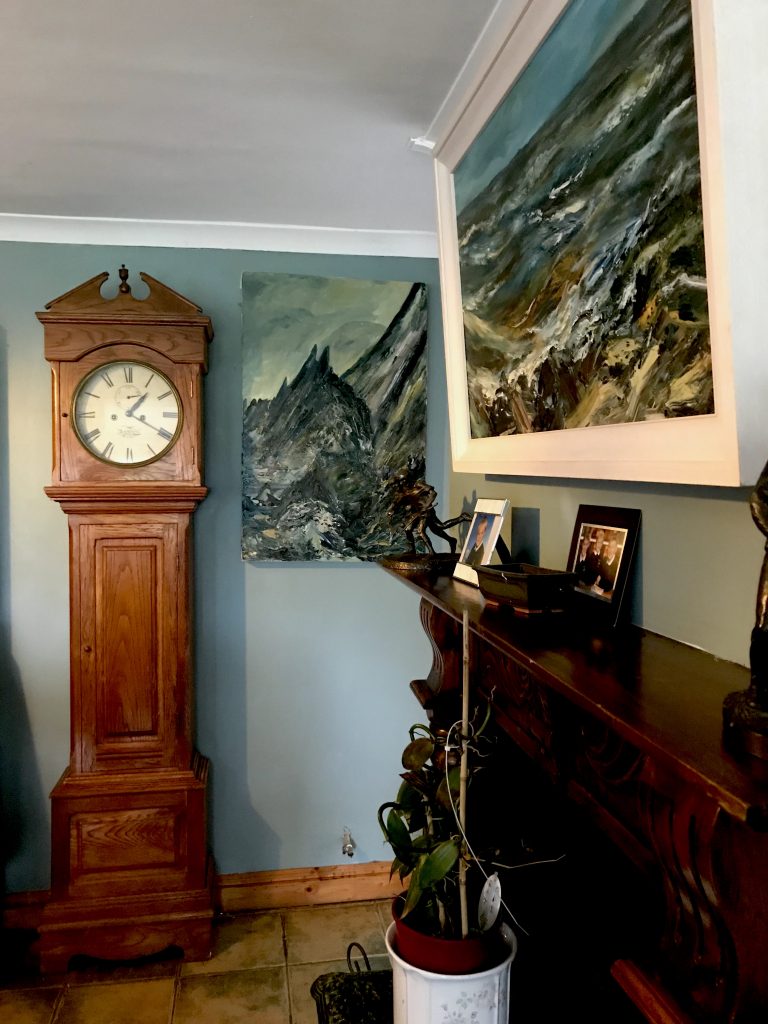Artist Profile: Bridgid McLoughlin of Wexford
I was first welcomed into Bridgid McLoughlin’s charming Wexford country house, an old backpacker’s bed and breakfast—of which one wall is rumoured to be four hundred years old—following the tails of my children’s Halloween costumes. We had prearranged for a neighbourly trick or treat, and I happily followed my little ghost and lion into the sitting room to say a warm hello. I was immediately impressed by the carefully curated collection of artwork on the walls.

As we moved back into the conservatory, my heart swelled at greeting the expansive painting hanging on the wall. It is not just the size of the painting that is impressive, but the depth and beauty of the thick oil strokes that truly captured my heart. I was drawn into the scene and felt the room around me fade away, enchanted by the painted sky over the harbour at dawn. It is evident that Bridgid is no stranger to the sea, as she so skilfully captures the essence of the waves.
Inspired by her love for her family and the rich wildness of the landscape of her native Ireland, Bridgid’s paintings explore the rugged relationship between rock and water, life and death. Her studio and home are filled with breathtaking oil-painted scenes and it was truly an honour to meet with her in her beautiful home to see her expansive collection of decades of work, even while many of her paintings have been sold throughout the years in exhibits and galleries.

“Any colour I see, I can mix it,” Bridgid tells me proudly, a truth that resonates in her collection. “There is no need to buy a whole box of colours when you’re able to blend them.” Hers is an inherited skill, learned from growing up in a family of skilled craftsmen and wood carvers, and beside a brother with a reputation for mixing coveted colours. Her subject matter varies from the bright, cheerful hues of flowers— honest meditations of her own gorgeous garden— to the complex and layered tones that compose the colours of the coast and the sea, to the warm, charming palette of rustic country scenes depicting chickens and turnips and the labours of the farmhands of old.
“I don’t paint for money, and I don’t paint to teach,” she tells me as she gracefully directs me to the Gorey Community School for art classes, my eagerness at her expertise overflowing despite myself. Bridgid is the depiction of a true artist: humbling, inspiring, and one whose work speaks for itself.
Stored on a table in her studio are a pile of her daughter Clodagh’s sketches, which were left behind, no longer needed; page after page of beautiful bouquets of bright flowers whose confident brush strokes and dazzling colours show that the artistic apple certainly doesn’t fall far from the tree.

We close the door to the studio and resume our conversation in the kitchen, where Bridgid turns her skilful hands back to chopping blanched almonds. A bowl of whiskey-soaked currants wait on the table. One Christmas pudding sits complete and wrapped in foil, another fresh from the oven, resting on the table in its beautiful brown paper wrap, awaiting delivery to her children.
I made my way out of the house and past the roses, still in bloom, that line the gravel path back to the road. The morning’s bright sun has given way to wind and rain, as it so often does these days, and I pull my jacket collar up, comforted by the knowledge that just down the road the waves crash against the shore, and crash against the shore, and crash ever more.